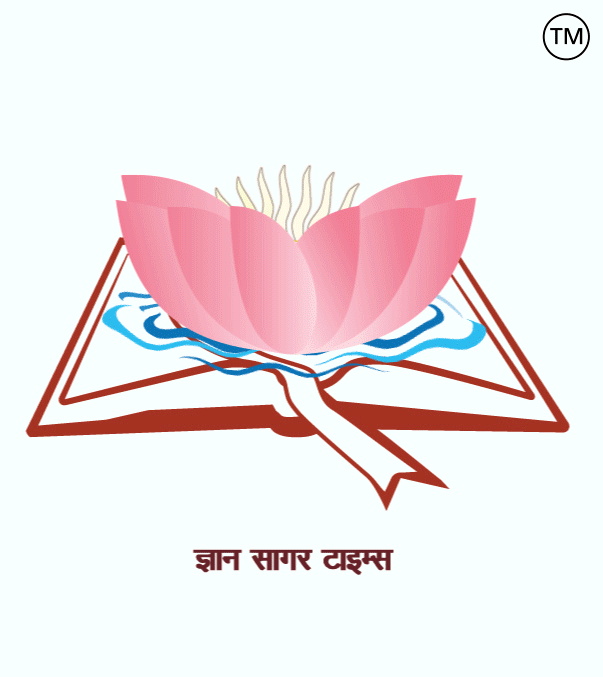
Education
भूगोल से संबंधित-145.
- How many degrees does the Earth rotate? = 15 degrees.
- What is the weight of the earth? = 9722×1024 kg.
- How many degrees does the earth rotate in 1 hour? = Earth rotates 360° on its axis in about 24 hours, that is, it rotates 15° in 1 hour and 1° in 4 minutes.
- How long does it take for one longitude of the Earth to pass in front of the Sun? = 365 days, 05 hours, 48 minutes.
- What are the three heat zones of the Earth? = Earth has three heat zones – tropical zone, temperate zone, cold zone.
- How many hemispheres is the earth divided? = Four hemispheres.
- Which line divides the earth into two parts? = Equator or Equator.
- Where does the Greenwich Line pass? = It also passes through England, but also through France and Spain in Europe, Algeria, Mali, Burkina Faso, Togo and Ghana in Africa, and over the South Pole through Antarctica.
- Where is Greenwich located? = The meridian drawn on the earth at 0° longitude is called the prime meridian, prime meridian, or Greenwich line. The standard time of the world is determined by this line. Greenwich, a city in London, is located on this line, so it is also called Greenwich Line.
- What does Greenwich mean? = The mean solar time of the Royal Greenwich Observatory of London has been taken as Greenwich Mean Time / GMT. It starts at midnight there.
- What is the significance of the Greenwich location? = The imaginary line passing through a place called ‘Greenwich’ located on zero longitude near England is called ‘Prime Meridian’ or ‘Zero Longitude’. All countries consider the time of this longitude line as standard time. This is Britain’s standard time, which is called ‘Greenwich Mean Time’.
- Which place is called Greenwich of India? = Due to the geographical location of Ujjain, Ujjain has been considered as “Greenwich” in ancient India. ‘Greenwich’ of India This city is situated on the map of the country at 23.9 degrees north latitude and 770 east longitude, at an altitude of about 1658 feet above sea level.
- Greenwich Line passes through how many countries of the continent of Africa? = Passes through Algeria, Mali, Burkina Faso, Togo, and Ghana in Africa, and through Antarctica over the South Pole.
- What is the latitude line? = 179 (Latitude lines are imaginary lines, their number is infinite).
- What is the standard meridian line? = 5° East longitude in India, which passes through Naini near Allahabad, has been considered as the standard time. India’s Standard Time is 82.5° East of GMT, which means our Standard Time is five and a half hours ahead of Greenwich Standard Time.
- Which is the main longitude line of India? = The length of India from north to south is about 3214 km and from east to west is about 2933 km. There is an extension of 30º longitude line to the middle of 68º 7′ longitude line in the west of India and 97º 25′ longitude line in the east.
- What is the value of the principal meridian? = 0° longitude.
- Which is the prime meridian of India? = The time of 82.5 degree meridian line passing near Mirzapur in Uttar Pradesh has been considered as Indian Standard Time.
- How is time determined? = There is a difference of 04 minutes in time when there is a difference of one longitude. Since the earth rotates from west to east. On moving towards east, time increases by 04 minutes at each longitude and on going west, time decreases by 04 minutes at each longitude.
- Which latitude divides India into almost 2 equal parts? = The Indian Peninsula is separated from mainland Asia by the Himalayas. The country is surrounded by the Bay of Bengal in the east, the Arabian Sea in the west and the Indian Ocean in the south. It is located entirely in the Northern Hemisphere, the extent of the country is 8° 4′ and 37° 6′. North of Equator at latitude 68°7′ and 97°25′ longitude.
- What is the latitudinal extent of whole of India? = The difference between the latitudinal and longitudinal extent of India is about 30°. The east-west extension of India is 2,933 km and the north-south extension is 3,214 km. The east-west expansion of South India at 22° North latitude has decreased. Near Kanyakumari, the southernmost point of India, is the confluence of the Bay of Bengal, the Arabian Sea and the Indian Ocean.
- Which latitude passes through India? = Tropic of Cancer parallel to the equator in the Northern Hemisphere 23°26′22″N 0°0′0″W Coordinates: 23°26′22″N 0°0′0″W, drawn from west to east on the globe are imaginary lines.
- Which longitude divides India into two equal parts? = The equator is an imaginary line on the surface of the Earth at equal distances from the North Pole and the South Pole. It divides the earth into northern and southern hemispheres.
- What is horse latitude? = Horse latitude 30 to 35 degrees north and south of the equator, that is, a subtropical high pressure belt found in both the northern and southern hemispheres. This belt lies between the belts of the western and trade winds and is quite calm. It keeps shifting a few degrees north or south every year.
- What is the name of the line passing through the middle of India? = The imaginary line passing through the middle of India is called the Tropic of Cancer.
- What is the difference between latitude line and longitude line? = Latitude lines are imaginary lines drawn parallel to the equator on the earth from west to east while longitude lines are imaginary lines from north to south joining the two poles.
- What is the difference between latitude and longitude? = The direction of latitude is from east to west, which is parallel to the equator. In contrast, the direction of longitude is from north to south, crossing the two poles.
- What is the symbol of latitude? = phi (ɸ).
- How many types of lines are there? = Four (horizontal line, vertical line, vertical and parallel lines).
- What is the difference between parallel lines? = A line having the same measure or value is called an isometric line. Imaginary lines drawn by joining places of equal value / density of an element / object on the map are called isopleths.
========== ========= ===========
- पृथ्वी कितने डिग्री घूमती है? = 15 डिग्री.
- पृथ्वी का वजन कितना है? = 9722×1024 किलोग्राम.
- पृथ्वी 1 घंटे में कितने अंश घूमती है? = पृथ्वी लगभग 24 घंटे में अपने अक्ष पर 360° घूम जाती है, अर्थात् वह 1 घंटे में 15° एवं 4 मिनट में 1° घूमती है.
- पृथ्वी के एक देशांतर को सूर्य के सामने से गुजरने में कितना समय लगता है? = 365दिन, 05घंटे , 48मिनट.
- पृथ्वी के तीन ऊष्मा क्षेत्र कौन से हैं? = पृथ्वी के तीन ताप कटिबंध है- उष्ण कटिबंध, शीतोष्ण कटिबंध, शीत कटिबंध.
- पृथ्वी को कितने गोलार्ध में बांटा गया है? = चार गोलार्ध.
- कौन सी रेखा पृथ्वी को दो भागों में बढ़ती है? = विषुवत रेखा या भूमध्य रेखा.
- ग्रीनविच रेखा कहाँ से गुजरती है? = इंग्लैंड से होकर गुजरती है, बल्कि यूरोप में फ्रांस और स्पेन से होकर, अफ्रीका में अल्जीरिया, माली , बुर्किना फासो , टोगो और घाना से होकर और दक्षिणी ध्रुव पर अंटार्कटिका से होकर गुजरती है.
- ग्रीनविच कहाँ स्थित है? = पृथ्वी पर 0° देशान्तर पर खींची गई मध्याह्न रेखा प्रधान मध्याह्न रेखा, प्रधान याम्योत्तर, या ग्रीनविच रेखा कहलाती है. दुनिया का मानक समय इसी रेखा से निर्धारित किया जाता हैं. लन्दन के एक शहर ग्रीनविच इसी रेखा पर स्थित हैं इसलिय इसे ग्रीनविच रेखा भी कहते है.
- ग्रीनविच का मतलब क्या होता है? = लन्दन के शाही ग्रीनिच वेधशाला के माध्य सौर समय को ग्रीनिच माध्य समय (Greenwich Mean Time / GMT) माना गया है. यह वहाँ की मध्यरात्रि से आरम्भ होता है.
- ग्रीनविच स्थान का क्या महत्व है? = इंग्लैंण्ड के निकट शून्य देशान्तर पर स्थित ‘ग्रीनविच‘ नामक स्थान से गुजरने वाली काल्पनिक रेखा को ‘प्राइम मैरिडियन‘ या ‘शून्य देशान्तर‘ कहते हैं. इसी देशान्तर रेखा के समय को सभी देश मानक समय मानते हैं. यह ब्रिटेन का मानक समय है, जिसे ‘ग्रीनविच मीन टाइम‘ कहते हैं.
- किस स्थान को भारत का ग्रीनविच कहा जाता है? = उज्जैयिनी की भौगोलिक स्थिति के कारण प्राचीन भारत में उज्जैन को “ग्रीनविच” माना गया है. भारत की ‘ग्रीनविच‘ यह नगरी देश के मानचित्र पर 9 अंश उत्तर अक्षांश एवं 770 पूर्व देशान्तर पर समुद्र सतह से लगभग 1658 फुट ऊँचाई पर बसी है.
- ग्रीनविच रेखा अफ्रीका महाद्वीप के कितने देशों से गुजरती है? = अफ्रीका में अल्जीरिया , माली , बुर्किना फासो , टोगो और घाना से होकर और दक्षिणी ध्रुव पर अंटार्कटिका से होकर गुजरती है.
- अक्षांश रेखा कितनी होती है? = 179 (अक्षांश रेखाएँ काल्पनिक रेखाएँ है, इनकी संख्या अनन्त है).
- मानक याम्योत्तर रेखा क्या है? = भारत में 5° पूर्वी देशान्तर, जो कि इलाहाबाद के निकट नैनी से गुजरती है, के समय को मानक समय माना गया है. भारत का मानक GMT से 82.5° पूर्व है, जिसका अर्थ है कि हमारा मानक समय ग्रीनविच के मानक समय से साढ़े पाँच घंटे आगे है.
- भारत देश की प्रमुख देशांतर रेखा कौन सी है? = भारत की उत्तर से दक्षिण तक लम्बाई लगभग 3214 किमी० एवं पूर्व से पश्चिम तक लम्बाई लगभग 2933 किमी है. भारत के पश्चिम में 68º 7′देशान्तर रेखा और पूर्व में 97º 25′देशांतर रेखा के मध्य तक 30º देशांतर रेखा का विस्तार है.
- प्रमुख याम्योत्तर का मान क्या है? = 0° देशांतर.
- भारत का प्रधान याम्योत्तर कौन-सा है? = उत्तर प्रदेश के मिर्जापुर के निकट से जाने वाली 5 डिग्री यामोत्तर रेखा के समय को भारतीय मानक समय माना गया है.
- समय का निर्धारण कैसे किया जाता है? = एक देशांतर का अंतर होने पर समय में 04 मिनट का अंतर होता है. चूँकि पृथ्वी पश्चिम से पूरब की ओर घूमती है. पूरब की ओर बढ़ने पर प्रत्येक देशांतर पर समय 04 मिनट बढ़ता जाता है तथा पश्चिम जाने पर प्रत्येक देशांतर पर समय 04 मिनट घटता जाता है.
- कौन सा अक्षांश भारत को लगभग 2 बराबर भागों में बांटा है? = हिमालय द्वारा भारतीय पेनिसुला का मुख्य भूमि एशिया से अलग किया गया है. देश पूर्व में बंगाल की खाड़ी, पश्चिम में अरब सागर और दक्षिण में हिन्द महासागर से घिरा हुआ है. यह पूर्ण रूप से उत्तरी गोलार्ध मे स्थित है, देश का विस्तार 8° 4′ और 37° 6′. अक्षांश पर इक्वेटर के उत्तर में, और 68°7′ और 97°25′ देशान्तर पर है.
- सम्पूर्ण भारत का अक्षांशीय विस्तार कितना है? = भारत के अक्षांशीय और देशान्तरीय विस्तार का अंतर लगभग 30° है. भारत का पूर्व-पश्चिम विस्तार 2,933 किलोमीटर तथा उत्तर-दक्षिण विस्तार 3,214 किलोमीटर है. 22° उत्तर अक्षांश के दक्षिण भारत का पूर्व-पश्चिम विस्तार घटता गया है. भारत के दक्षिणतम बिंदु कन्याकुमारी के निकट बंगाल की खाड़ी, अरब सागर और हिन्द महासागर का संगम है.
- कौन सा अक्षांश भारत से होकर गुजरता है? = कर्क रेखा उत्तरी गोलार्ध में भूमध्य रेखा के समानान्तर 23°26′22″N 0°0′0″W निर्देशांक: 23°26′22″N 0°0′0″W पर, ग्लोब पर पश्चिम से पूर्व की ओर खींची गई कल्पनिक रेखा हैं.
- कौन सा देशांतर भारत को दो समान भागों में विभाजित करता है? = भूमध्य रेखा पृथ्वी की सतह पर उत्तरी ध्रुव एवं दक्षिणी ध्रुव से सामान दूरी पर स्थित एक काल्पनिक रेखा है. यह पृथ्वी को उत्तरी और दक्षिणी गोलार्ध में विभाजित करती है.
- अश्व अक्षांश क्या होता है? = अश्व अक्षांश भूमध्य रेखा के 30 से 35 डिग्री उत्तर व दक्षिण अर्थात उत्तरी एवं दक्षिणी दोनों गोलार्धों में पाये जाने वाली एक उपोष्ण कटिबंधीय उच्च वायुदाब पेटी है. यह पेटी पछुवा तथा व्यापारिक पवनों की पेटियों के बीच में होती है और काफी शांत होती है. यह हर साल कुछ डिग्री उत्तर या दक्षिण में खिसकती रहती है.
- भारत के मध्य से होकर गुजरने वाली रेखा का क्या नाम है? = भारत के मध्य से होकर गुजरने वाली काल्पनिक रेखा कर्क रेखा के नाम कर्क रेखा है.
- अक्षांश रेखा और देशांतर रेखा में क्या अंतर है? = अक्षांश रेखाएं पृथ्वी पर पश्चिम से पूर्व की ओर भूमध्य रेखा के सामानांतर खींची गयी काल्पनिक रेखाएं हैं जबकि देशान्तर रेखाएं उत्तर से दक्षिण की ओर दोनों ध्रुवों मिलाने वाली काल्पनिक रेखाएं होती हैं.
- अक्षांश और देशांतर के बीच क्या अंतर है? = अक्षांश की दिशा पूर्व से पश्चिम की ओर है, जो भूमध्य रेखा के समानांतर है. इसके विपरीत, देशांतर की दिशा उत्तर से दक्षिण है, दो ध्रुवों को पार करते हुए.
- अक्षांश का प्रतिनिधित्व चिन्ह क्या है? = phi (ɸ).
- रेखा कितने प्रकार की होती हैं? = चार (क्षैतिज रेखा, ऊर्ध्वाधर रेखा, लंबवत और समानांतर रेखाएं).
- समान रेखा में क्या अंतर है? = समान माप अथवा मान वाली रेखा को सममान रेखा कहते हैं. मानचित्र पर किसी तत्व/ वस्तु के समान मूल्य /घनत्व वाले स्थानों को मिलाकर खींची जाने वाली काल्पनिक रेखाएं सममान रेखाएं (आइसोप्लेथ) कहलाती है.
========== ========= ===========
- How many hemispheres is the earth divided? = Four hemispheres.
- Which line divides the earth into two parts? = Equator or Equator.
- Where does the Greenwich Line pass? = It also passes through England, but also through France and Spain in Europe, Algeria, Mali, Burkina Faso, Togo and Ghana in Africa, and over the South Pole through Antarctica.
Link: –





